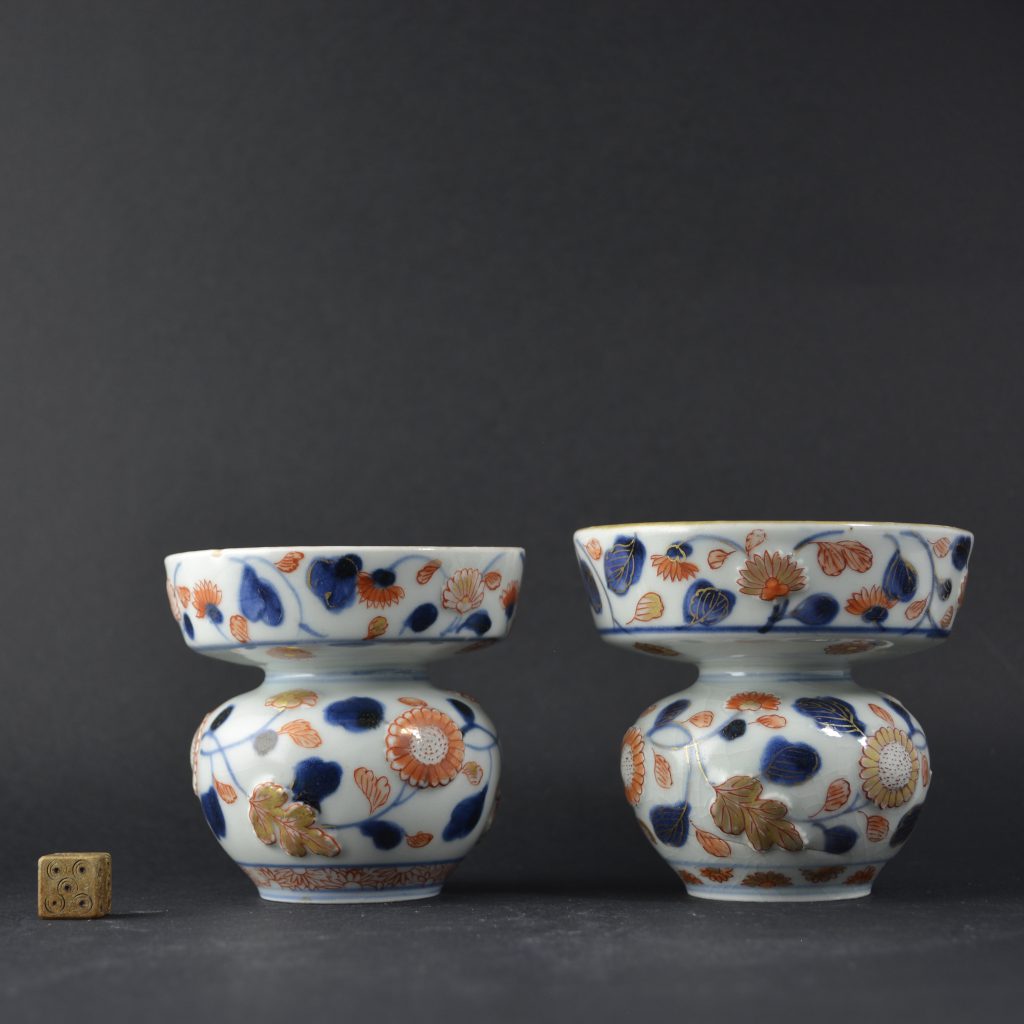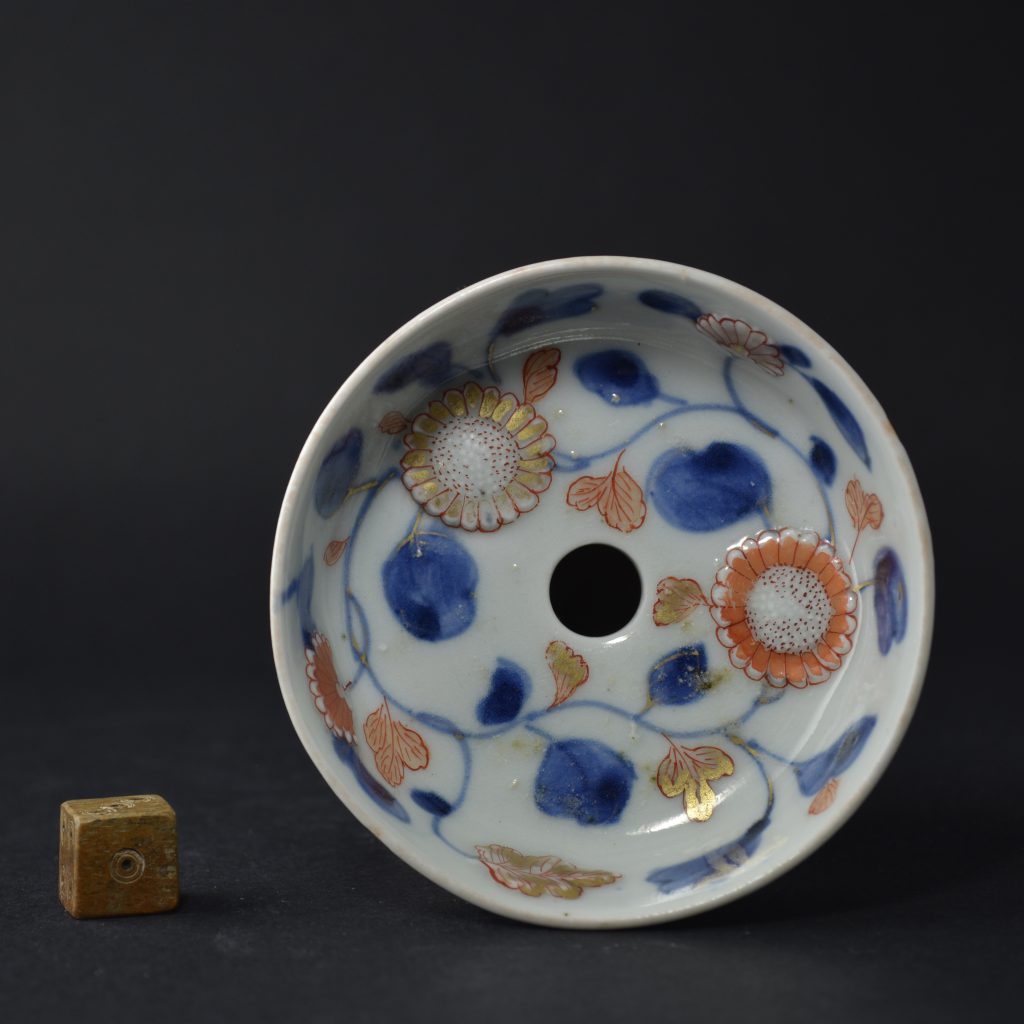
Pair of 18th Century Japanese Imari Containers
A pair of early 18th Century Japanese Imari Porcelain containers c.1700-1720. The compressed globular shape has a deep vertical rim containing a flat area with a small central hole. The exterior is painted with chrysanthemum, some of the flowers are moulded in low relief.
They give the appearance of being spittoons but the whole form is far too small and the appature is very small. A very similar Japanese porcelain container is in the Groninger Museum (Netherlands), however there is not one small hole but five rows of five very small holes. Jorg (see references) is puzzled by the Gronginger example as I am about the pair illustrated here. I think his theory, that these were used for hot water and supported a tea or wine-pot is plausible. He illustrated a wine or teapot on the stand he talks about and it does look convincing. However, Chinese sanders, such as the Kangxi porcelain one I had several years ago have very small holes (see below). So I think it fair to say the function of the present piece is still very much open to speculation.
SOLD
- Condition
- One has a thick crack across the base, the other has a fine crack to the upright top section.
- Size
- Height : 7.6 cm (3 inches)
- Provenance
- N/A
- Stock number
- 25227
- References
- For a very similar Japanese porcelain container see : Fine and Curious, Japanese Export Porcelain in Dutch Collections (Christiaan J.A.Jorg,Hotei Publishing,2003. ISBN 90-74822-16-9) page 99, plates 98 and 98a.
Information
A Blue and White Chinese Export Porcelain Sander, Kangxi Period c.1700.












